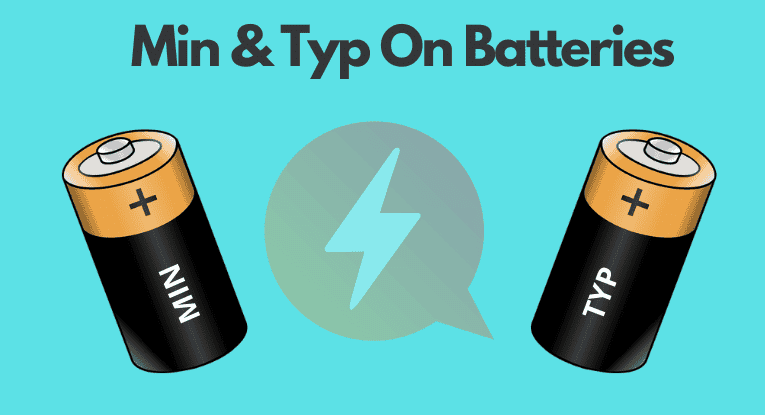Let’s delve deeper into these battery indicators.
“Min” vs “Typ”
When you see “min” and “typ” on a battery, these terms represent the guaranteed minimum and the nominal (typical) capacity of the battery. For example, if a phone’s battery capacity is listed as 4000mAh (typ) and 3900mAh (min), this means that the manufacturer guarantees the battery will have at least a minimum capacity of 3900mAh, while the typical or nominal capacity is expected to be around 4000mAh.
Min Voltage
The minimum voltage value is the lowest safe voltage to which a battery can be discharged. Discharging a battery below this voltage can cause damage and reduce its lifespan.
Rated/ Typical Voltage
The rated or typical voltage is the average voltage that a battery will hold under load, i.e., during discharge. It’s an important value as it helps to define the energy storage capability of the battery.
Maximum Voltage
This is the highest safe voltage to which a battery can be charged without causing damage or reducing its lifespan.
Effects of Battery Manufacturing Variations
Batteries are mass-produced items and, as with any mass-produced product, there can be slight variations from unit to unit, even within the same production batch. These variations can be due to slight differences in material quality, manufacturing precision, and other factors. These variations can lead to differences in the actual capacity of each battery, which is why manufacturers provide a range (min and typ) rather than a single capacity value.
Impacts on Device Performance
The actual capacity of the battery, which should be within the min and typ range, will impact the performance of the device it powers. A battery that tends to be closer to the min capacity will provide less runtime for the device compared to a battery that tends to be closer to the typ capacity.
Battery Health Over Time
Over time and with use, the actual capacity of a battery tends to decrease due to various factors such as internal resistance increase, active material degradation, etc. This is why older batteries do not last as long as when they were new. Over a long enough period, the actual capacity can decrease below the specified min capacity. To better understand this process, check out this article.
Application-Specific Capacities
Sometimes, manufacturers may also provide capacities specific to certain applications. For example, a “max” capacity could be the maximum capacity that can be delivered under ideal conditions, or a high-drain capacity could be the capacity when the battery is discharged at a high current.
Best Practices for Consumers
When comparing two batteries, you shouldn’t just look at the typ capacity. If one battery has a higher min capacity, it could be a more reliable choice since its worst-case performance is better. Additionally, you should consider how your specific use cases and the device’s power requirements align with the capacities and other specifications of the battery.
Conclusion
In conclusion, understanding the terminology used in battery specs can help you make informed decisions when purchasing or using these products. Always remember to use your devices responsibly to maintain their health and extend their lifespan.
